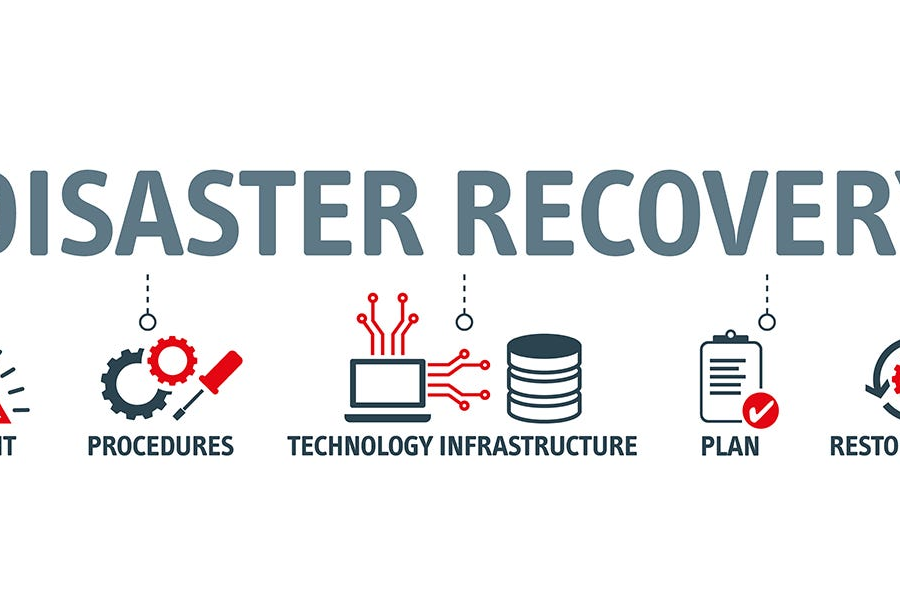How To Ensure Business Continuity With Effective Backup and Disaster Recovery Solutions
Table of Contents
- Importance of Backup and Disaster Recovery
- Identifying Vulnerabilities in Your IT Infrastructure
- Developing an All-Inclusive Backup and Disaster Recovery Strategy
- Implementing Cloud-Based Solutions
- Regular Testing and Updating
- Educating and Training Staff
- Leveraging External Expertise
Implementing reliable backup and disaster recovery solutions is essential for maintaining business continuity. Regular data backups, secure storage, and efficient recovery processes minimize downtime during disruptions. Businesses can prevent significant losses and continue operations with minimal interruptions by ensuring rapid restoration of critical systems and information.
Importance of Backup and Disaster Recovery
In today’s digital age, businesses increasingly rely on technology to manage their operations. Robust backup and disaster recovery (DR) solutions ensure business continuity. Whether it’s a natural disaster, a cyber-attack, or hardware failure, having an actionable plan can differentiate between minor disruption and catastrophic loss. An IBM analysis indicates that the average cost of a data breach in 2021 was $4.24 million, demonstrating the need for a well-thought-out disaster recovery plan.
Many businesses fail to have adequate DR solutions, which leaves them vulnerable to unforeseen events that may cripple their operations. Implementing dependable DR solutions ensures a swift recovery, minimizes downtime, and safeguards critical data, thereby maintaining business continuity. Continuity is not just about bouncing back but efficiently and effectively, minimizing downtime, and ensuring clients and customers experience minimal disruption.
Identifying Vulnerabilities in Your IT Infrastructure
Before crafting a recovery plan, it is crucial to identify areas susceptible to failure. This includes hardware malfunctions, software bugs, and human errors. A thorough vulnerability assessment can prevent unexpected disruptions. Conducting tests on your existing infrastructure will highlight weak points and areas requiring fortification, allowing you to address potential issues proactively. It’s essential to periodically review these vulnerabilities as technology evolves and new threats emerge. Understanding your infrastructure’s weaknesses paves the way for a targeted and efficient disaster recovery strategy.
A comprehensive vulnerability assessment involves both automated tools and manual analysis. Tools can quickly scan the system for known vulnerabilities, while manual assessments can identify flaws that automated tools might miss. You can explore detailed assessments and tools on CSO Online for more insight.
Developing an All-Inclusive Backup and Disaster Recovery Strategy
A comprehensive plan should detail data backup processes, establish Recovery Time Objectives (RTOs), and outline steps for resuming critical operations. It is not enough to have a plan; it needs to be well-documented, frequently reviewed, and accessible to all relevant stakeholders. Effective data protection policies and regular updates are essential. For example, Maple Corporation integrated their departments’ efforts into a unified recovery plan, drastically reducing their downtime after a breach, thanks to well-coordinated efforts and precise documentation.
Creating this plan involves collaborating with multiple departments to understand their specific needs and potential bottlenecks during recovery. This includes IT, operations, customer service, and even marketing. A comprehensive strategy guarantees that every facet of the company is safeguarded and that every staff knows their duties. A vital component of a successful plan is redundancy—having multiple backup options, including off-site and cloud storage, ensures data is always recoverable.
Implementing Cloud-Based Solutions
Cloud-based solutions provide a flexible and scalable data backup and disaster recovery method, reducing reliance on physical hardware and increasing resilience to localized disasters. They enable quick operation restorations and geographical data dispersal, ensuring continuous updates with the latest security protocols and technology advancements. Businesses can scale their storage needs based on demand, allowing them to expand as their business grows. The pay-as-you-go model of cloud services will enable companies to optimize costs by only paying for storage and services, making cloud-based backup solutions a top choice for modern businesses.
Regular Testing and Updating
Regular testing of your disaster recovery strategy is crucial to ensure its effectiveness. This includes simulated drills and periodic reviews to keep it current. Regular testing helps identify deficiencies that may only be apparent once a disaster strikes. It also instills confidence in staff, ensuring they know what to do in stressful situations. Testing can also identify areas needing additional resources or training, leading to a more robust recovery strategy. To cover all bases, it’s recommended to incorporate different types of tests, including walk-throughs, simulations, and full-scale drills.
Educating and Training Staff
Staff should be trained on backup procedures and aware of their roles in the event of a data breach. Regular training sessions help mitigate human errors and ensure a swift response when needed. Employee readiness can be the linchpin of an effective recovery plan. Training should include response drills and clear instructions for different scenarios, ensuring everyone knows what to do when the unexpected occurs. Monthly or quarterly training refreshers can keep everyone sharp and aware of new protocols.
This education should also extend to understanding phishing attacks and other common threats. Employees are often the first line of defense, and their awareness can prevent many potential breaches. Comprehensive operational and cybersecurity training programs can create a more resilient and prepared workforce.
Leveraging External Expertise
Sometimes, it’s best to bring in external experts to assist with creating and implementing a disaster recovery plan. Their experience can be invaluable in identifying potential vulnerabilities and suggesting industry best practices. Consulting firms specialize in assessing risks, identifying gaps, and formulating bespoke recovery strategies that align with your business needs. Leveraging this expertise can streamline the process and imbue your plan with higher reliability and thoroughness. When collaborating with specialists, you are more likely to keep up with the most recent developments in disaster recovery technology and trends.
External consultants can offer an unbiased perspective, highlighting risks and opportunities that internal teams might overlook. Their familiarity with industry norms and laws guarantees that your disaster recovery plan satisfies all legal and operational criteria, giving you peace of mind and lowering the possibility of fines.
Keep an eye for more news & updates on GlamourUer!






